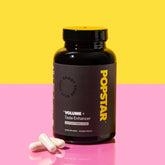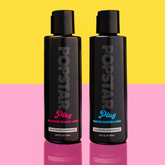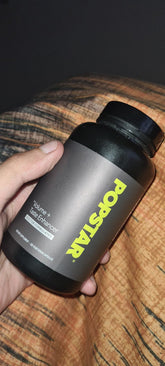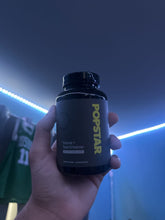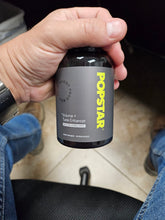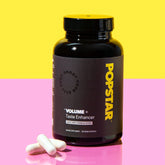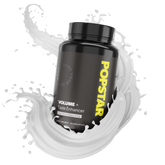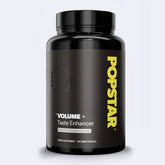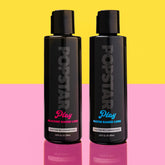Personal lubricant is a widely used product designed to reduce friction, enhance comfort, and support sexual wellbeing for individuals and couples. For men, personal lubricants can play an important role in improving sexual satisfaction, preventing irritation, and supporting intimacy during solo or partnered activities. This article provides an in‑depth, medically accurate, and SEO‑optimized overview of what personal lubricants are, how they work, and how to choose the right option for different needs.
Table of Contents
- What Is Personal Lubricant?
- Quick Facts About Personal Lubricant
- Types of Personal Lubricant
- How Personal Lubricant Is Used
- Why Personal Lubricant Matters for Men’s Sexual Health
- Benefits of Personal Lubricant
- Risks and Downsides of Personal Lubricant
- Consent, Communication, and Safety
- Personal Lubricant and Medical Conditions
- When to Seek Professional Help
- Frequently Asked Questions About Personal Lubricant
- References and Further Reading
- Disclaimer
What Is Personal Lubricant?
Personal lubricant refers to a product formulated to reduce friction during intimate activity. It supports comfort, hydration, and smooth movement during sexual intercourse, masturbation, or medical procedures. Men's personal lubricant options include water‑based, silicone‑based, natural formulations, and specialized products made for sensitive skin or anal use.
Personal lubricants for men are particularly helpful for addressing dryness, sensitivity, and irritation. They are also commonly used to enhance pleasure and reduce discomfort for both partners.
Key takeaways:
- Personal lubricants help reduce friction and increase comfort.
- Water‑based lubricants are widely compatible with most condoms and toys.
- Silicone personal lubricants offer long-lasting glide.
- Natural personal lubricants may suit men with sensitive skin.
- Specialized lubricants are available for anal comfort and support.
- Personal lubricants can help reduce discomfort related to dryness or irritation.
- Personal lubricants are safe when used correctly.
- Choosing the best personal lubricant depends on skin type, activities, and partner needs.
Quick Facts About Personal Lubricant
| Category | Summary |
|---|---|
| Definition | A product that reduces friction during sexual or medical activity |
| Common Types | Water‑based, silicone, natural, hybrid |
| Best For Men | Dryness, comfort, sensitivity, anal support |
| Condom Safety | Water‑based and silicone are condom‑safe (avoid oil with latex) |
| Sensitive Skin Options | Natural or glycerin‑free lubricants |
| Anal Use | Thicker or silicone-based lubricants |
Types of Personal Lubricant
Water-Based Personal Lubricant
- Compatible with latex condoms and most sex toys.
- Easy to wash off.
- Often recommended for sensitive skin.
- May dry faster than silicone.
Silicone Personal Lubricant
- Long-lasting glide.
- Excellent for anal use due to durability.
- Not recommended with silicone sex toys.
Natural Personal Lubricant
- Minimal additives.
- Suitable for sensitive or allergy-prone skin.
- Often water‑based.
Oil-Based Lubricant
- Not recommended with latex condoms.
- Long-lasting, but may be difficult to clean.
Hybrid Lubricants
- Combine silicone and water‑based formulas.
- Balanced glide and easy cleanup.
How Personal Lubricant Is Used
Personal lubricants support comfort and reduce irritation during sexual activity. They help address dryness that may arise from medications, stress, age, or natural variation.
Typical uses include:
- Vaginal intercourse.
- Anal intercourse (with thick or silicone options).
- Solo stimulation or masturbation.
- Condom lubrication to prevent breakage.
- Reducing friction from medical exams.
Why Personal Lubricant Matters for Men’s Sexual Health
Personal lubricants support men’s sexual health by preventing irritation, supporting erectile function through reduced anxiety, and improving comfort for both partners. Many men experience dryness or discomfort due to medications, medical conditions, or stress. Personal lubricants for men offer a simple solution.
Common benefits:
- Supports comfortable erections by reducing friction-related anxiety.
- Reduces irritation or chafing.
- Enhances sensation and confidence.
- Promotes communication and connection with partners.
Benefits of Personal Lubricant
- Reduces friction and irritation.
- Supports erectile confidence.
- Helps with dryness due to medications or aging.
- Improves comfort during anal activity.
- Reduces risk of microtearing.
- Enhances sexual pleasure and relaxation.
Risks and Downsides of Personal Lubricant
Most personal sexual lubricants are safe when used correctly. However, certain products may cause irritation, allergic reactions, or condom damage.
Common mild issues:
- Skin irritation from fragrance or glycerin.
- Drying or stickiness (water‑based lubricants).
More serious risks:
- Allergic reactions.
- Using oil-based lubricants with latex condoms (breakage risk).
- Using unsuitable lubricants for anal activity (can increase discomfort).
Risks vs Risk Reduction
| Risk | Reduction Strategy |
|---|---|
| Irritation | Choose natural personal lubricant or glycerin-free formulas |
| Condom breakage | Avoid oil-based lubricants with latex condoms |
| Anal discomfort | Use silicone or thick gel formulas |
| Sensitive skin flare-ups | Select personal lubricant for sensitive skin |
Consent, Communication, and Safety
Using personal lubricants is most effective when paired with clear communication. Men can talk with partners about preferences, comfort levels, and product choices.
Tips for communication:
- Use simple language about comfort.
- Normalize dryness as common and not a sign of dysfunction.
- Ask partners about sensitivities.
- Agree on the type of lubricant before activity.
Personal Lubricant and Medical Conditions
Personal lubricants may be especially helpful for men dealing with:
- Erectile dysfunction.
- Premature ejaculation.
- Sensitive skin conditions.
- Diabetes.
- Medication-related dryness.
Lubricants can reduce discomfort that may influence sexual confidence or anxiety.
When to Seek Professional Help
Men should consider speaking with a healthcare provider if:
- Lubricant causes burning or persistent irritation.
- Symptoms of dryness or pain continue despite lubricant use.
- Erectile difficulties accompany discomfort.
- Allergic reactions occur with multiple lubricant types.
A urologist, dermatologist, or sex therapist can offer guidance.
Frequently Asked Questions About Personal Lubricant
What does personal lubricant do?
Personal lubricant reduces friction and increases comfort during sexual or medical activity. It supports smooth movement and reduces irritation.
Is personal lubricant normal for men to use?
Yes. Personal lubricants for men are common and widely used for comfort, performance confidence, and dryness.
What is the best personal lubricant for men?
The best personal lubricant depends on skin sensitivity, activities, and preference. Silicone is long-lasting, while water‑based is versatile.
Is water-based personal lubricant safe?
Water-based lubricants are safe, gentle, and compatible with most condoms and toys.
Should men use silicone personal lubricant?
Silicone lubricants are excellent for long-lasting glide and anal activity.
What personal lubricant is best for sensitive skin?
Natural personal lubricants or glycerin‑free options are best for sensitive skin.
Can personal lubricant help with dryness?
Yes. Personal lubricant for dryness is a straightforward way to increase comfort.
Can personal lubricant cause irritation?
Some ingredients may irritate sensitive skin. Switching to natural or hypoallergenic lubricants may help.
Is personal lubricant necessary for anal activity?
Yes. Personal lubricant for anal use is essential because the area does not self‑lubricate.
Can lubricant affect erections?
Lubricants do not harm erections and may reduce performance anxiety.
Does lubricant reduce sensation?
Some individuals feel reduced sensation with thicker silicone products, while others find it enhances stimulation.
Can men use personal lubricant for masturbation?
Yes. Men's personal lubricants can reduce friction and enhance comfort.
Is natural personal lubricant effective?
Natural lubricants can be effective for sensitive or allergy-prone skin.
Are oil-based lubricants safe?
Oil-based products are safe for some activities but not with latex condoms.
How do I choose the right personal lubricant?
Consider skin type, activity type, sensitivity, and whether condoms are used.
Should I avoid certain ingredients?
Men with sensitive skin may want to avoid fragrances, flavors, and glycerin.
Can personal lubricant improve intimacy?
Yes. Lubricants can reduce discomfort and support connection and confidence.
When should I talk to a doctor about lubricant use?
If irritation persists or dryness continues despite using different lubricant types.
References and Further Reading
- Resources from major urology associations.
- National health service sexual wellness guidelines.
- Educational materials from reputable sexual health nonprofits.
- Peer-reviewed articles on personal lubricants and sexual comfort.
- Dermatology resources on sensitive skin and allergens.
Disclaimer
This article is for informational and educational purposes only and does not constitute medical or mental health advice. It is not a substitute for speaking with a qualified healthcare provider, licensed therapist, or other professional who can consider your individual situation.
